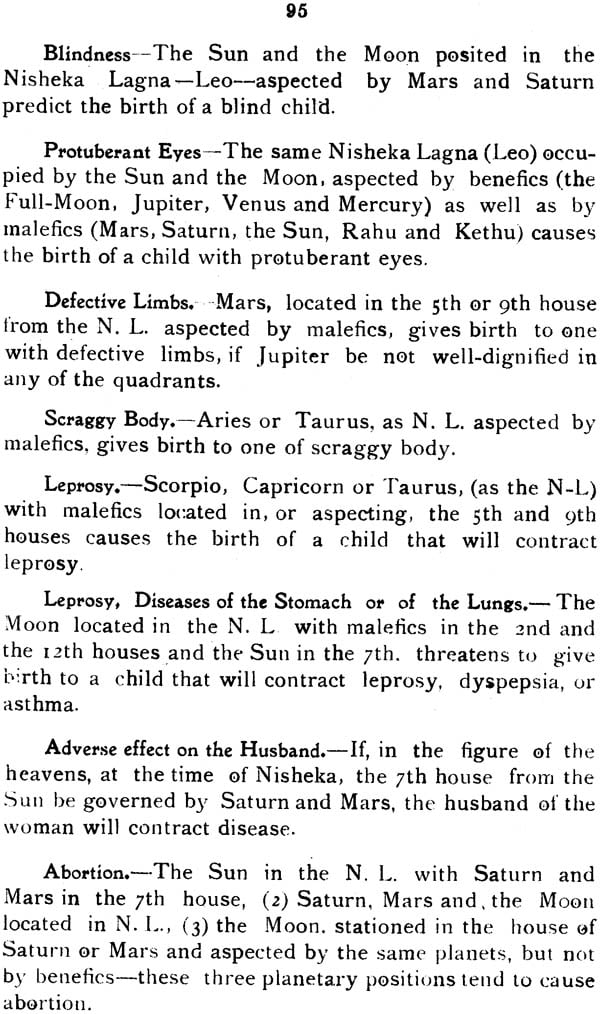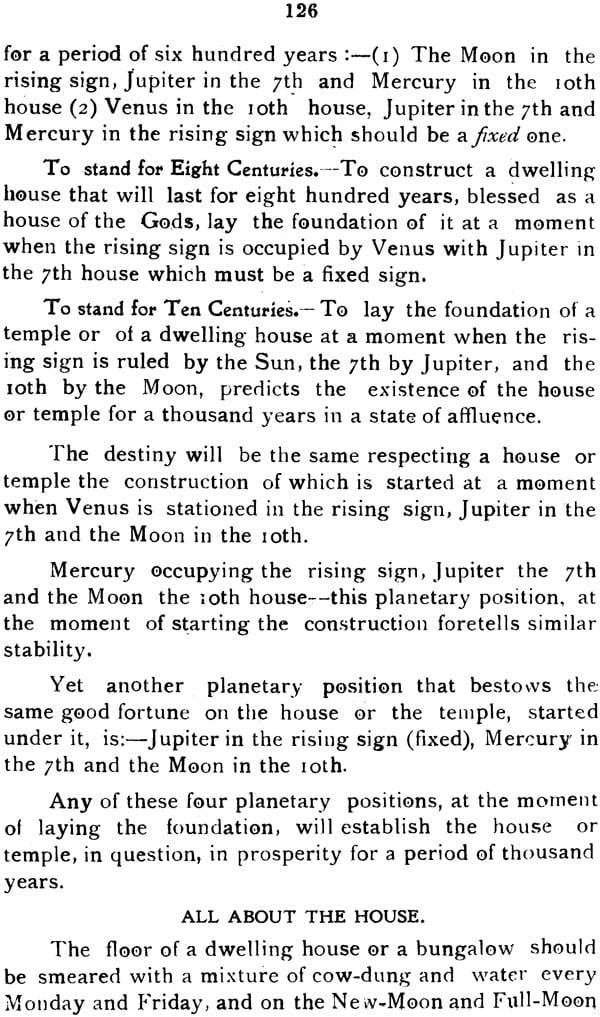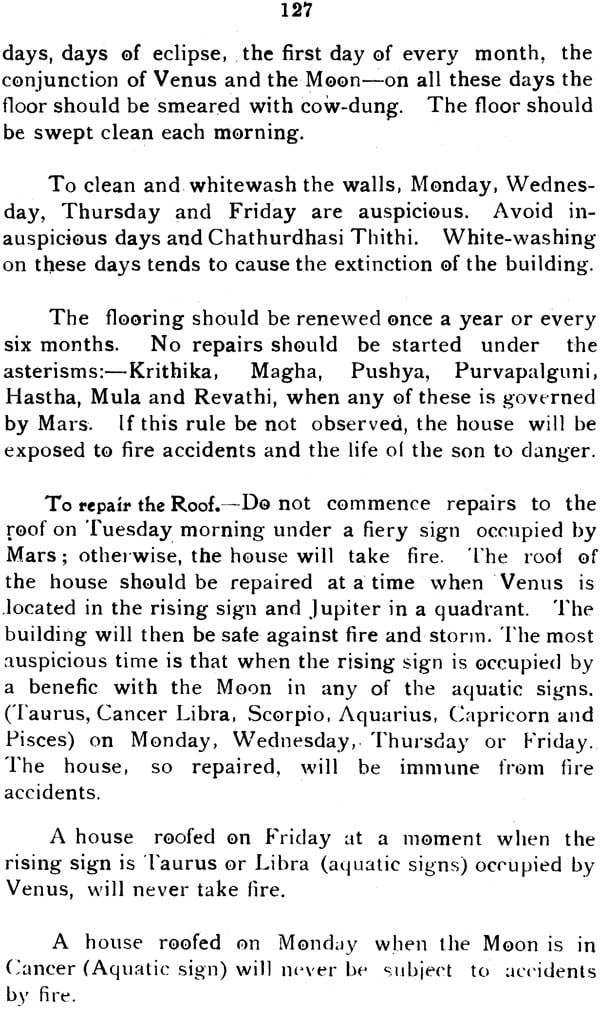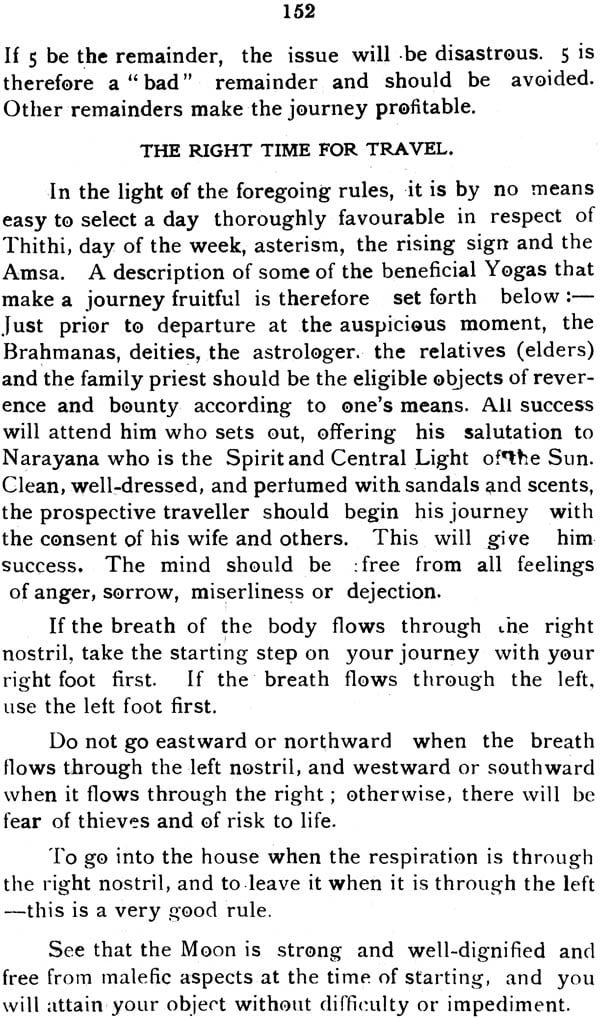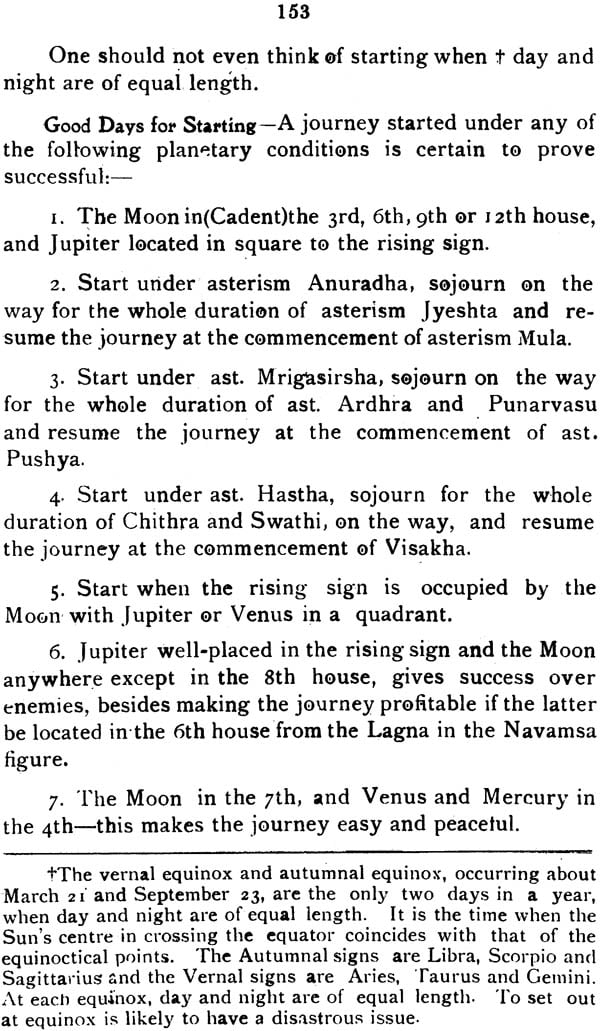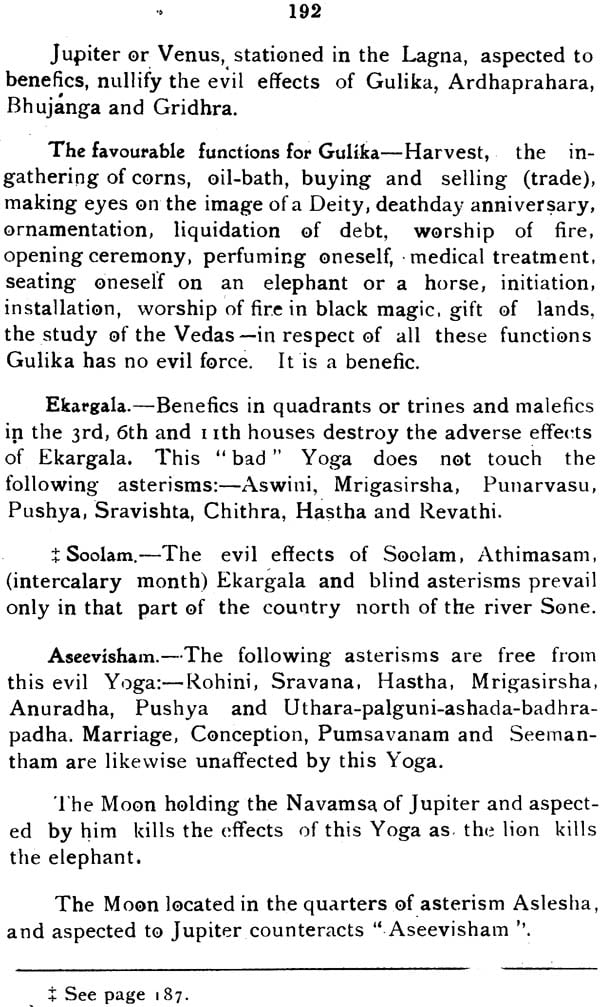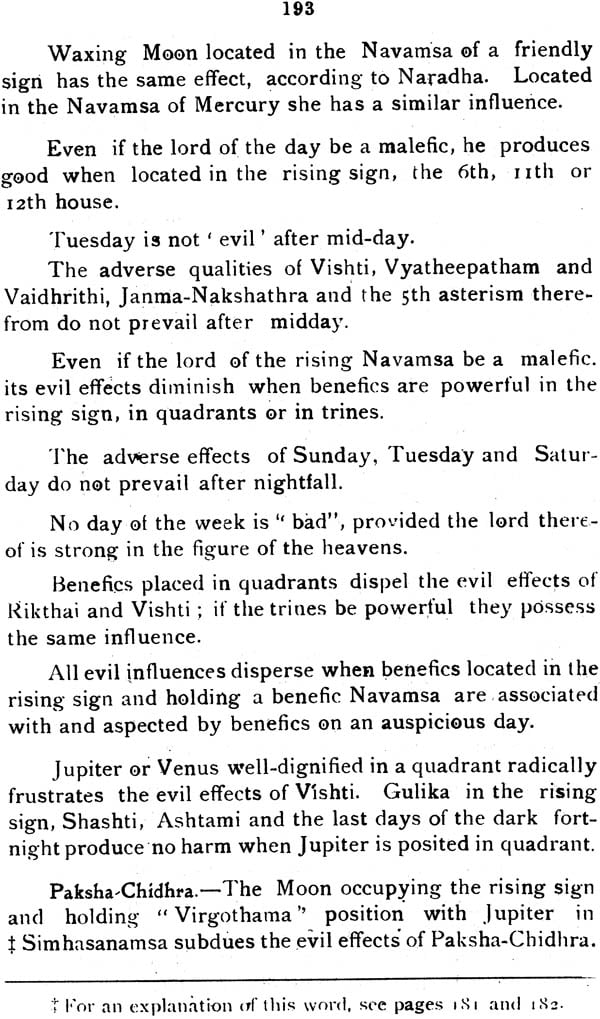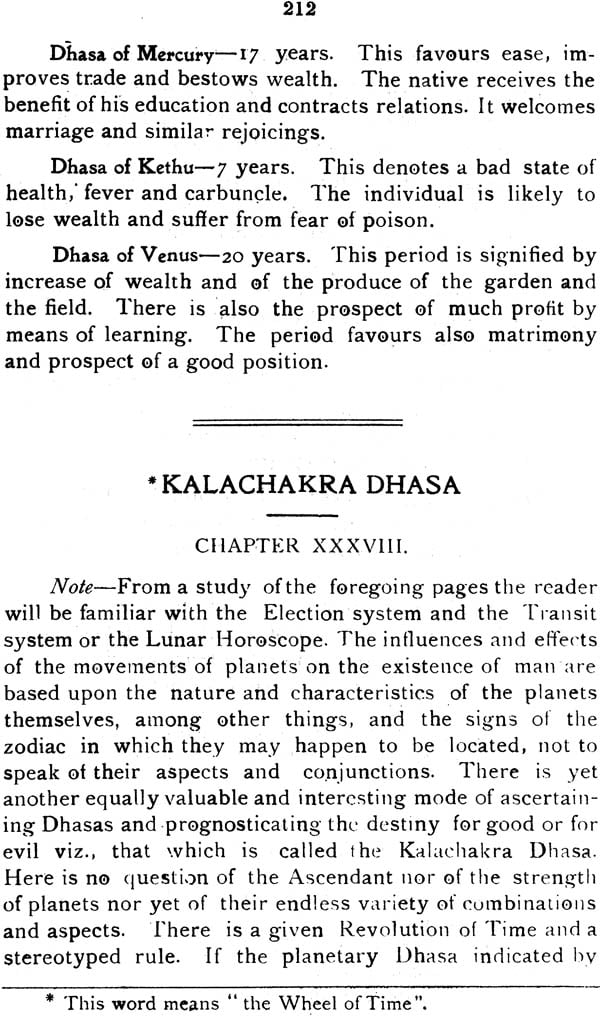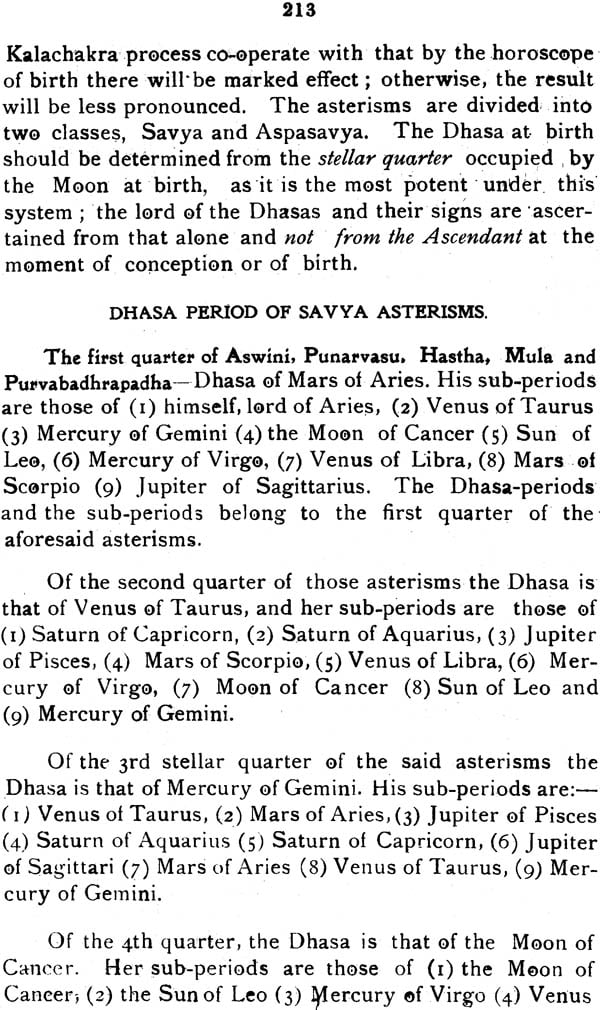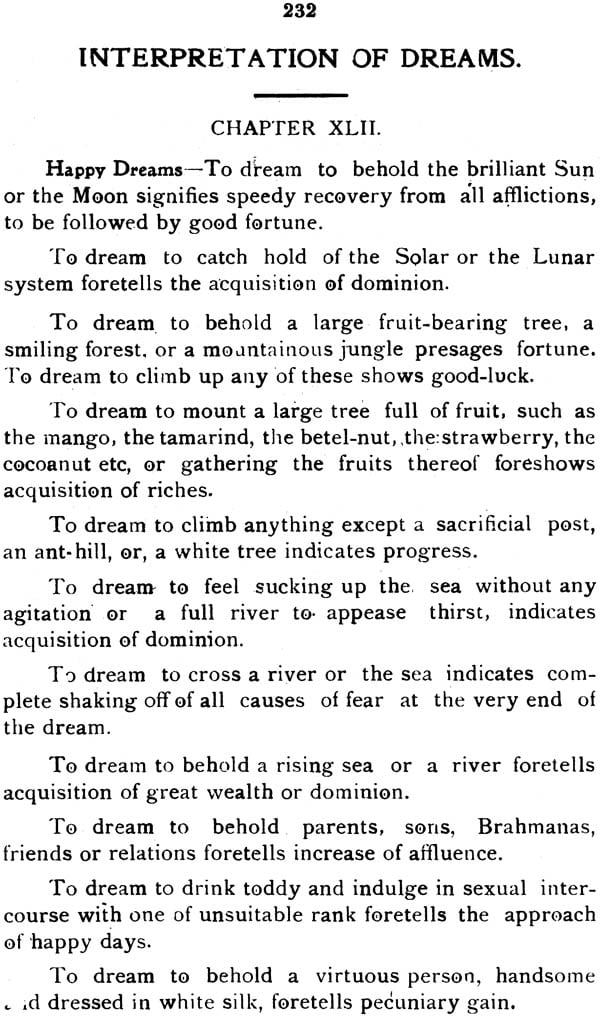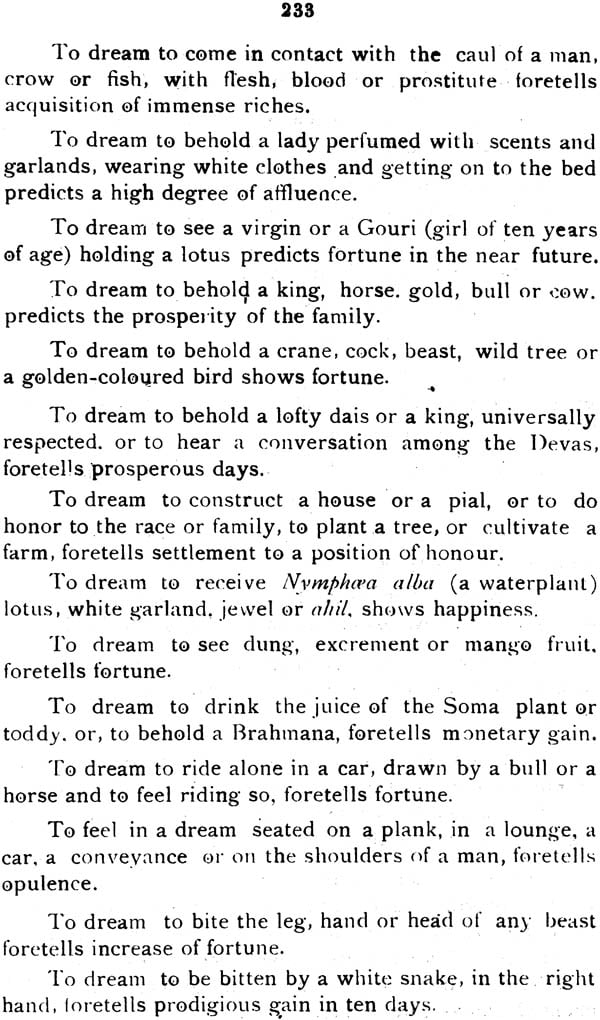
Kalaprakasika (The Important Classic on Muhoortha, The Electional Astrology)
Book Specification
| Item Code: | NAJ909 |
| Author: | N.P. Subramonia Iyer |
| Publisher: | CBH Publications |
| Language: | English |
| Edition: | 2006 |
| ISBN: | 8185381844 |
| Pages: | 276 |
| Cover: | Paperback |
| Other Details | 8.5 inch x 5.5 inch |
| Weight | 280 gm |
Book Description
About the book
"Sri. N.P. Subramonia Iyer, has undertaken an astrological series, which will deal with the various parts of Astrology and the present volume contains, text and translation of the Kalaprakasika, a treatise of the selections of the right times by the astrological rule,· for undertaking any and every action of human life." ... "The most interesting part of the book for the ordinary reader is the introduction in which he gives the psychological influence of the planets and states for which they stand in relation to Indian Vedantic philosophy of Existence."
"I have not seen elsewhere the exposition ·of the subject equally original and illuminative"
About the Author
"Mr. Subramonia Iyer's work as a translator and annotator, bears evident signs of care, industry and research."
"The introduction, which the translation is prefaced, is well written in the course of which Sri Subramonia Iyer narrates in a masterly manner certain elementary facts of astronomy which forms the ground work of alphabet of astrology and proceeds to show how the astrological symbolism that signals the work-a- day human character and destiny is only a re-interpretation, in one of its many phases or expressions, of the universal cosmic symbolism whether it is conceived as imminent or transcendent, as subjective or objective. The introduction then enters upon a brief analysis of the contents of Kalaprakasika, an analysis which is limpid so far as it goes." .... "He has said enough in the introduction to leave the reader thirsting for more of marshalled material which may become effective stepping stones to further research along scientific lines."
Introduction
The value and practice of the science of Astrology were well understood in India by the ancient Aryans at a period of hoary antiquity, The question of the time at which the science arose is, probably, one in regard to which it is extremely difficult to arrive at a confident conclusion. It is, however, a well-known fact that in the earliest literature of the ancient Hindus, Astrology holds a prominent place. It was the first sketch of science of the ancient Brahmanas to whom a knowledge of astronomical positions was indispensable in order to determine the proper time for commencing and ending their sacrifices, "principally, the so-called sutras or sacrificial sessions" which "could not be known without an accurate knowledge of the time of the Sun's northern' or southern progress. The knowledge of the calendar forms such an essential part of the ritual that many important conditions of the latter could not be carried on without the former." t The brilliant views on the .dome of the universe which they witnessed from night to night must have been a delightful study to the great sages who, having effected a deliverance and a separation from the low cares of mortality, were absorbed in" looking through Nature up to Nature's God ". It must be observed that a knowledge of the motions and influences of the heavenly bodies and the laws by which they are governed with such perfect order and harmony, though highly requisite for the Brahmana for the performance of sacrifices, instituted according to a certain order of time, was in fact but a " circumstance" in the serene ascent of intense meditation on divine wisdom, and goodness, to render himself that pure and perfect image of his Great Original. Our limited faculties cannot imagine that subtle communion with nature' which guided their studies of" mystical" subjects and' by the help of which alone they had discovered the revolution of the earth and other planets round the Sun, the twelve Signs of the Zodiac, the nature and causes of Eclipses and the planetary positions and conjunctions, centuries before Copernicus, Galileo, Tycho Brahe, Kepler and the illustrious Sir Isaac Newton were born. The vision of the ancient Brahmana was, then, the soil from which Astrology sprang. He alone could explain" the theory 'of his basis, if any, and there is no tradition about it. The opinion prevailed for some time that the 12 Signs were discovered in Egypt at some remote period and that they had a reference to the, division of the seasons and the agriculture of that country at the time. Sir William Jones ascribes the discovery to Anaximander about 560 B.C , affirming, at the same time, that they had, been -known to the Hindus from time immemorial. Now, Anaximander was one of Thales' scholars, the other being Pythagoras who travelled through India, Egypt and Chaldea in pursuit of knowledge. In India we are told, he learnt the theory of the rotation 'of the earth and all the other planets round the Sun as their centre, a doctrine which was adopted by Copernicus and followed up by Sir Isaac Newton. It is reasonable to support that Pythagoras, returning from his travels in the East, communicated, among other things, the doctrine, imparted to him by the Hindus about the 12 Signs of the Zodiac, to his contemporary, Anaximander.
In tracing the evolution of astronomy of the Aryans one sees the, grandeur and precision of the meditation of the ancient Brahmanas who were the first to cultivate it and through whom the science came to light. The frontiers of its province have been extended by the discoveries of modern science which 'has revealed the subtler power of nature and the great reservations of energy and their compositions. But, from those very early times, Astrology has been in high favour in India. The course of ages has communicated to it a fascination to which no other science has any pretension. The feasts and fasts of the Hindus, the allegories of Hindu mythology, the chief incidents of the Ramayana and the Mahabharatha are all connected with the configuration of planets. The Mundaka Upanishad, one of the earliest of: the Upanishads, refers to Astrology as one of the six Vedangas. Students of Sanskrit literature are aware of that earliest treatise on Astronomy, the Vedanga Jyotisha, which treats of the regulation of time by astronomical positions. These remarks seem relevant because in the first place, they throw light upon the practice by the ancients, from the earliest times, of the science of Astronomy and of its Life-Side, Astrology, and, secondly, how the most enlightened of the earliest inhabitants of the earth derived their knowledge of the science which is still the most astoundingly accurate and which is still carefully followed up and taught by men of superior intelligence of every nation from age to age.
By the help of telescopes, Western scientists have been able to discover, investigate and determine the positions and the compositions of the heavenly bodies, their immense distance from one another, their diversity in magnitude and the phenomena they produce. Years of observation and experience supply them with the materials wherewith to build up a principle or a theory of scientific importance. The system of the ancient sage in India is different. That the Highest dwells with him is his working hypothesis. Disengaged from all worldly concerns and purified from every stain by the doctrine of austere devotion to Him, meditation was his key to unlock the marvels of Nature, "the perenniel miracle which the soul worketh". The science of Astrology is .a signal illustration of the value and preciseness of hill absorption of mind in the Divine.
Contents
| Introduction | ||
| Chapter | ||
| I. | Foreword | 1 |
| II. | Jathakarma | 3 |
| III. | Ornamentation | 29 |
| IV. | Ear-Boring | 35 |
| V. | Choulam-Tonsure | 37 |
| VI. | To Leran the Alphabet | 41 |
| VII. | Pnanayanam-Thread-Marriage | 42 |
| VIII. | Education | 53 |
| IX. | Upakarma | 57 |
| X. | Initiation in a Manthra | 61 |
| XI. | The Study of the Vedas | 65 |
| XII. | Samavarthanam | 67 |
| XIII. | Decision of Marriage | 68 |
| XIV. | Celebration of Marriage | 79 |
| XV. | On Attainment of Puberty | 87 |
| XVI. | Nishekam | 91 |
| XVII. | Pumsavanam | 96 |
| XVIII. | Lying in Apartment | 99 |
| XIX. | Agricultural Work | 100 |
| XX. | Harvest | 105 |
| XXI. | To Lay up Treasure | 109 |
| XXII. | Dinner of New Grains | 114 |
| XXIII. | To Put on New Clothes | 115 |
| XXIV. | To wear a New Ornament | 117 |
| XXV. | To Lay Foundation | 119 |
| XXVI. | The Opening Ceremony | 130 |
| XXVII. | Coronation | 132 |
| XXVIII. | To Install a Deity | 137 |
| XXIX. | Yathra Travel | 139 |
| XXX. | Concerning Disease | 159 |
| XXXI. | To Take Treatment | 160 |
| XXXII. | To Pay up Debts | 165 |
| XXXIII. | Exterminatory Yogas | 166 |
| XXXIV. | Neutralization of Adverse Yogas | 189 |
| XXXV. | Tithi-Vara Nakshathra Yogas | 199 |
| XXXVI. | The Transit System | 207 |
| XXXVII. | Nakshatra Dhasa | 210 |
| XXXVIII. | Kalachakra Dhasa | 212 |
| XXXIX. | On Jenma Nakshathra | 223 |
| XL | Sankrama or Solar Ingresses | 224 |
| XLI. | The Annual Horoscope | 228 |
| XLII. | Interpretation of Dreams | 232 |
| XLIII. | Sreejayanthi | 237 |
| XLIV. | The Krithika Festival | 239 |
| XLV | Ekadhasi | 241 |
| | Appendix | 243 |
